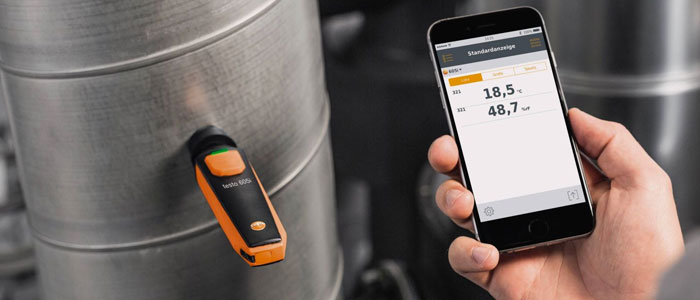
‘Wireless’ has become a buzz word over the last 10 to 15 years, suggesting speed, efficiency and modernity. Whilst these advantages remain somewhat ill-defined, it is certain that various methods of wireless communication have filtered onto an ever-increasing array of products in domestic, commercial and industrial environments. The test and measurement sector is no exception. The benefits, however, can remain quite vague so this article aims to give both a basic overview of wireless technology and an insight into how it can help professional electricians and maintenance experts. Most wireless-enabled products on Test-Meter now use one of three principal methods: infrared, Bluetooth or Wi-Fi.
What are infrared, Bluetooth and Wi-Fi?
Infrared communication technology, aka IrDA, uses an invisible infrared light to transmit data between an emitter and a receiver. This is commonly found in television remote controls and was first developed as early as 1950 in the United States. In 1993, the eponymous Infrared Data Association (IrDA) was formed in an attempt to standardise protocol but communications remain largely fragmented which is good for security but poor for compatibility.
Used in: Printers, including models from Anton, Kane and TPI
Bluetooth, named after a medieval Danish king, is a much more recent invention than IrDA. Originally conceived as a replacement for RS-232 communication cables, it emerged from a collaboration between Ericsson and Intel in 1996 and is now overseen by the Bluetooth Special Interest Group, consisting of hundreds of major technology companies. Bluetooth operates by forming a ‘piconet’ of paired devices on a short-distance digital radio frequency with one ‘master’ device able to transmit to several ‘slaves’. This allows real-time readings from meters to be projected directly onto a smartphone screen and saved to the smart device’s memory.
Used in: Testo Smart Probes, FLIR METERLINK®
Finally, Wi-Fi functions in a similar way to Bluetooth but instead forms a Local Area Network (LAN) between the user’s test equipment and his/her smart device. This is a standardised communication system administered by the Wi-Fi Alliance since 1999 and actually developed thanks to a 1985 legal ruling in the USA which declared that the 802.11 radio frequency was free to be used by all. This paved the way for universal adoption of Wi-Fi at that frequency which led to the communication system we know today. The extra data capacity of Wi-Fi compared to Bluetooth and Infrared allows very large files like thermal images to be quickly uploaded to a smart device.
Used in: FLIR Thermal Cameras
Why use Wireless in Test and Measurement?
There are several advantages to wireless communication when it comes to performing electrical, building or HVAC inspections. Firstly, instant transfer of data via Wi-Fi or Bluetooth creates an instant back-up of that data which lessens the chances of files being completely lost. This is particularly useful when working in challenging environments where equipment is tested to its limits. On a similar note, all three forms of wireless connectivity allow the user to avoid carrying unnecessary extra clutter on site. Cables constitute a useful reserve option rather than an essential component.
A second major advantage of wireless connectivity is that it allows the user to combine and compare readings on site. This can take several forms but is extremely noticeable when using a smartphone or tablet as a main reading panel from a series of probes, for example with Testo Smart Probes. Alternatively, this communication can be used to link a sophisticated device like a thermal camera to instruments that take quantitive readings like moisture meters and clamp meters. Such systems are available on thermal imaging cameras from FLIR and Chauvin Arnoux. This ability to compare values on sites allows a true picture to emerge during inspections rather than having to wait until afterwards for comprehensive assessment.
Finally, the time saved by instant data download via wireless communication allows the user to become more efficient and get more work done as well as opening up the memories of both the smart device and the free Apps that usually accompany wireless systems. Cloud storage, another common feature of wireless test and measurement instruments, allows speedy dissemination of inspection results to colleagues around the world, thus keeping workforces connected and saving further time as everyone stays up-to-date on project developments.
Overall, wireless technology adds several useful strings to the bow of any item of test or measurement equipment. It helps save time and space in addition to allowing instant communication and on-site comparison of multiple measurement parameters. This combination of quantitive data to go alongside observed phenomena makes for thorough, rapid, and complete inspections no matter the sector or the surroundings.
